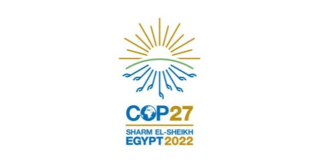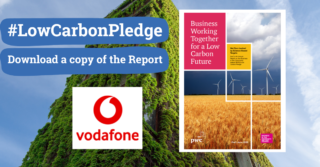Hovione and University College Cork partner up on a new project that will detect active pharmaceutical ingredients in wastewater
“Pharmaceuticals in the environment” is a joint project between Hovione Ltd and University College Cork. This project aims to develop a method that will detect active pharmaceutical ingredients (APIs) in wastewater and ensure that the concentration of those APIs is below the Environmental Protection Agency’s safe limit. This research is just one project aimed at increasing Hovione’s corporate social responsibility and protecting the environment. Emma O’Sullivan-Carroll has answered some questions on this research as part of her PhD in analytical chemistry.
An introduction to you and your PhD thesis and working with Hovione.
My name is Emma O’Sullivan-Carroll. I am a second-year analytical PhD student at University College Cork. I graduated with a BSc in Chemistry with Forensic Science in 2017 and an MSc in Analytical Chemistry in 2019. My PhD thesis is entitled the “Development of a real-time SPE-CE method to ensure the API concentration in wastewater is below the EPA safe limit”. My research focuses on developing an efficient method to detect Hovione’s products in their wastewater and compare their concentrations in the wastewater to the EPA’s safe limit of 0.5 mg/L. Working with Hovione is an incredible opportunity. I am gaining invaluable industry experience as well as academic experience from my PhD. I have a great support system in Hovione, with team members providing advice and guidance across the site. Hovione is increasing its awareness of sustainability, and this research project is just one part of that. They are aspiring to provide essential medications for patients and look after the environment while doing it. I am truly honoured to have the opportunity to work with them.
Why did you choose to research this area?
Water is essential for every organism on this planet. Ensuring that we have high-quality water for the health and wellbeing of humans, animals, and the environment is critical. I also believe improvements and advancing technology are fundamental to ensuring that wastewater released back into the environment is safe and in compliance with EPA regulations.
Background information on pharmaceuticals in the environment
What is the environmental impact of pharmaceuticals in wastewater?
Research has shown the devastating effects resulting from the release of pharmaceuticals in wastewater can have on the environment. Some examples of this type of pollution have been extremely harmful, in particular to aquatic organisms. Pharmaceuticals in the wastewater have been proven to cause algae to over bloom and deplete the oxygen in the water, suffocating the aquatic organisms. Different pharmaceuticals can lead to different consequences. Research done on the effects of antibiotics has shown to cause deformities to the aquatic organisms exposed to them. Hormones, in particular, oestrogen, have been shown to cause male fish to change their sex, depleting the organisms’ reproductive rate and reducing the population of that species.
What are the dominant pharmaceuticals in wastewater?
There is a wide range of pharmaceuticals in wastewater. The dominant pharmaceuticals are dependent on their sources. Pharmaceuticals can enter the wastewater through numerous pathways such as household waste, hospital/veterinary waste, surface runoff from farms, and pharmaceutical manufacturing. The two types of pharmaceuticals gaining attention and are now on the EPA watch list due to their known effects are antibiotics and hormones.
How is wastewater containing pharmaceuticals currently treated?
Currently, wastewater containing pharmaceuticals are being treated in the same manner as for regular wastewater treatment. This is because testing to see if there are pharmaceuticals in the wastewater is not being conducted as a routine procedure. Research projects like mine will raise awareness of this issue and have the potential to help identify active ingredients in wastewater.
Solutions
How would the tracker work?
For this project, we are developing an offline sensor. This will work by placing the probe into a water sample, getting reading to indicate if there are any pharmaceuticals in the wastewater, and then determining if the concentration of the pharmaceuticals is at a safe level and in compliance with regulatory thresholds.
Is there anything else like it on the market?
In academia, much research is being done on the development of miniature and portable devices because of their benefits, such as quicker analysis times and point of concern deployment. Another device on the market was developed by TelLab called Chemcatcher, which is used to monitor a wide range of pollutants in environmental waters.
What are the results you are hoping to achieve?
I would love to get a method in place in Hovione to detect the release of pharmaceuticals in the wastewater before being released back into the environment. An important goal of my project is also to raise awareness on the effects that such release of pharmaceuticals can have on the environment the and importance of monitoring the concentration of the pharmaceuticals in wastewater.
Once this innovation has proven to be successful would it be possible to scale it?
I think it could be possible with more research to make the sensor more efficient and more sensitive so that we could detect lower concentrations and transfer the method for other pharmaceutical compounds.
Is it possible to remove pharmaceuticals from wastewater?
From the research articles that I have read, my understanding is that it can be pretty challenging to remove pharmaceuticals from wastewater. The difficulty in eliminating them is dependent on the pharmaceutical’s chemistry. Research is being conducted on removing different classes of pharmaceuticals from wastewater so it could be much more efficient in the future.







